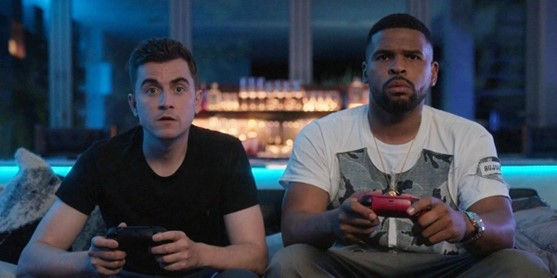We Don't Not Care
- Chris Slininger
- Aug 15, 2024
- 3 min read
Chris Slininger is a U.S. Army officer. He has served in the Army for the past ten years, during
which time he has learned that mentoring is the key to helping people realize and actualize their purpose to achieve meaningful success in life. Chris serves as the Military Mentors eMMissary Team Lead and cannot wait to talk to you about the program and how it changed his life.

"Isaac’s not gay, I am.”
Eyes dart around the room, and everyone looks mildly uncomfortable at Colin Hughes’
proclamation after his team captain, Isaac, storms out of the locker room.
Dani Rojas, his teammate, quickly affirms Colin by saying, “Yeah. Yes, amigo. You’re gay, big
whoop. But we don’t care. Right guys?”
Sounds like the correct thing to say in this instance, right? Someone opens up and reveals part of themselves; they’re authentic and genuine, and in our rush to support, we don’t care that they’re different in (insert uniqueness here) way.
Well, as Coach Lasso brings us back to class on inclusivity and caring, we don’t not care.
Lasso goes on to say that we do care and uses the story of his Denver Broncos fan friend Stevey Jewell to showcase that “not caring” about someone’s uniqueness isn’t the same as caring for the person.
In probably his most impactful statement of the episode, possibly the season and the series,
Coach Lasso says to Colin:
“We don’t not care. We care very much. We care about who you are and what you must’ve been going through. Yeah? But hey, from now on, you don’t have to go through it all by yourself.” 1
The Society for Human Resources (SHRM) defines inclusion as an “environment in which all
individuals are treated fairly and respectfully, have equal access to opportunities and resources, and contribute fully to the organization's success.” 2
Looking towards the future, we see a changing landscape as organizations roll back Diversity, Equity, and Inclusion (DEI) initiatives. However, this does not lessen our burden as leaders to be inclusive – in fact, we must fortify our efforts to extend a hand and bring others into the room.
How do we, as leaders and as mentors, build inclusive environments? How do we “don’t not
care”?
We do this by making sure we care for the people around us. Caring for the people around us means building relationships with them to connect and learn about them. We don’t just make a relationship to ask the person for assistance, help, or a favor. We care by extending trust and a helping hand with no desire for a return on investment from the person.
We are curious about our people because we want to learn more about them. As Ted Lasso
quotes Walt Whitman, “Be curious, not judgmental.” In an earlier episode of Ted Lasso, Coach Lasso describes how this quote taught him that others who judge, make mean jokes, or use people do so because they don’t take the time to be curious and learn about the person – they just judge the person. 3 We should all try to be curious and not judgmental.
We put our people in positions where they can thrive and pursue their purpose. As we move
further into the information age, we need to start looking at aligning people with their purpose. In his book DRiVE, Daniel Pink brings up Motivation 1.0 – food and reproduction; Motivation 2.0 – carrots and stick reward systems as the predominant ways our world has operated. However, research is showing more and more that there is another way to motivate individuals – autonomy, mastery, and purpose. 4 If we put our people in positions where they can pursue these three aspects, we can unleash their power and see them thrive.
We advocate for them when they are not around, ensuring their hard work is noticed. When
looking at how mentors can best serve their mentees, one of the models we look at is the PIE model – Performance, Image, Exposure. Exposure accounts for 60% of an individual’s success. Exposure happens when an individual (a mentor) intentionally places the person (the mentee) in situations where others can see the mentee shine. Exposure extends the table, adds a chair, and puts the silverware down – it is one of the best ways to be inclusive.
If we do all of this with an honest effort, we can slowly but surely build an inclusive
environment and make sure our people know that
We don’t not care about them.
1 Ted Lasso, Season 3, Episode 9 La Locker Room Aux Folles
2 AIHR SHRM Definition of Inclusion.
3 Ted Lasso, Season 1, Episode 8 S1.E8 ∙ The Diamond Dogs
4 Pink, D. H. (2011). Drive. Canongate Books.



Comments